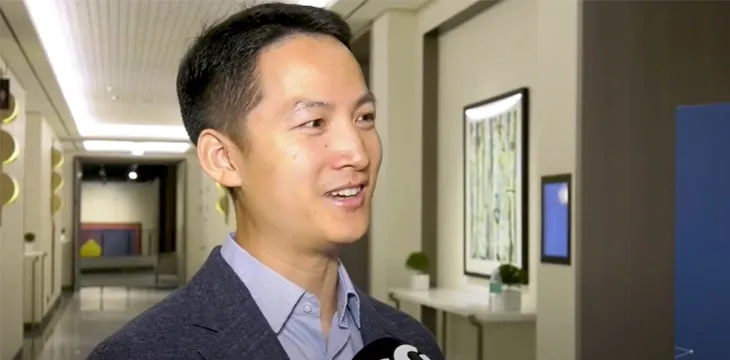|
Getting your Trinity Audio player ready...
|
This week’s edition of The Bitcoin Bridge looks at a Bitcoin project that has definitely bridged the Pacific: sCrypt. Its founder, Xiaohui Liu, is a Chinese expat now living in Silicon Valley and managing a distributed team. He tells us all about how he got there, why Bitcoin Script can handle contracts and tokens better than any other blockchain, and what he hopes people will use sCrypt for.
Xiaohui gives the details on how Bitcoin‘s native Script has the ability to run advanced functions. Call them “smart contracts” or just “contracts” if you will (since those have become the standard terms) but they make it possible to perform complex tasks that help manage a business, retrieve and store massive amounts of data, and tokenize both assets and functions. You can read a list of sCrypt’s achievements and projects in 2020 here.
One of Xiaohui’s main campaigns of the past year has been to prove Bitcoin BSV is “Turing Complete”. Why is it so important? In the world of propaganda and social media the meme that Bitcoin can’t run contracts “because it’s not Turing Complete” is used as a common meme… but it’s also untrue.
Turing Completeness is a computer science concept the unaccustomed may struggle to understand. To help out, Xiaohui and sCrypt have produced a series of examples in code to prove Bitcoin’s case. The best-known is Conway’s Game of Life, a cell simulator that would be impossible to run on-chain unless a blockchain was capable of maintaining states for long periods of time. Game of Life itself is Turing Complete, sCrypt made it run on the Bitcoin blockchain using Script—therefore, the Bitcoin blockchain is Turing Complete.
Really, that’s all you need to understand about it.
Xiaohui explains to us briefly how all this works and why it’s important for businesses to see it for themselves. He also describes how Bitcoin has been capable of running complex code like this right from its first release in 2009, but it took BSV’s Genesis update (which restored functions of the original protocol that had been removed over the years) to make it possible again.
He also talks about the differences between BTC, Ethereum and Bitcoin BSV—and where BTC and ETH have fallen short. It’s impossible to run the kind of contract code enterprise-tier users require on networks with limited transaction capacity, or fees in the tens and hundreds of dollars per transaction. Bitcoin BSV has solved this problem… by recognizing the solution was there right from the start.
It took more than just technical prowess to understand what Bitcoin is really capable of, and Xiaohui Liu is just one example of how Bitcoin BSV has attracted those with true vision. Hear what he has to say by watching the interview above, and be inspired.

 08-08-2025
08-08-2025 





